In the vast landscape of the Italian countryside, amidst rolling hills and expansive fields, there exists a noble and steadfast guardian. The Maremma Sheepdog, with its regal presence and ancient lineage, embodies the essence of loyalty and protection.
But what lies beneath the majestic exterior of this remarkable breed? How do they fare in different living environments, and what are their unique characteristics that make them stand out?
In this exploration of the Maremma Sheepdog, we will uncover the answers to these questions and more, shedding light on a breed that has captivated the hearts of shepherds and dog enthusiasts alike.
Key Takeaways
- Maremma Sheepdogs are large working dogs with a long, thick, white coat.
- They have a gentle and affectionate nature and are known for their intelligence and quick learning abilities.
- Maremma Sheepdogs can adapt well to apartment living, but their energy levels and behavior towards neighbors should be considered.
- When choosing a dog for an apartment, prioritize qualities such as being quiet, low-energy, calm indoors, and exhibiting good manners.
Origin and History
The Maremma Sheepdog has a rich and storied history, originating in Italy as a dedicated and fearless livestock guardian dog. Dating back to ancient times, these dogs were specifically bred to protect livestock from predators and thieves. Their heritage as working dogs is deeply ingrained in their DNA, making them highly skilled in their role as guardians.
The Maremma Sheepdog's ability to fearlessly defend their flock has made them a valuable asset to shepherds throughout history. Their presence on the Italian countryside is a testament to their unwavering loyalty and dedication.
Today, the Maremma Sheepdog continues to serve as a dependable and vigilant guardian, preserving their ancient lineage and contributing to their enduring legacy.
Size and Physical Characteristics
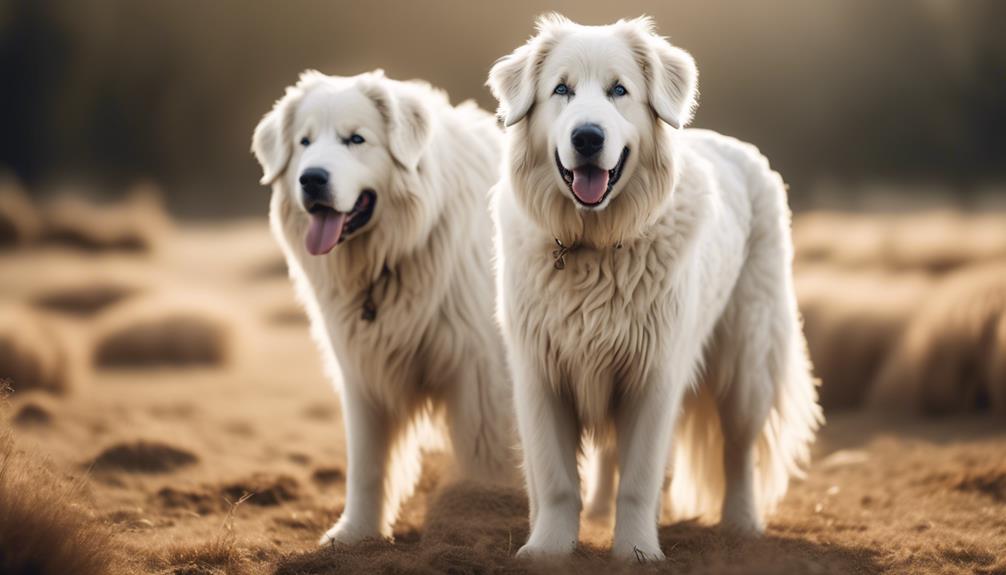
Dating back to ancient times, the Maremma Sheepdog's origins and history as livestock guardians have shaped not only their temperament and skills, but also their size and physical characteristics.
Here are some key points about the size and physical characteristics of the Maremma Sheepdog:
- Height: Males typically range from 25.5 to 28.5 inches tall, while females range from 25.5 to 26.75 inches tall.
- Weight: Males weigh between 77 to 100 pounds, while females weigh between 66 to 88 pounds.
- Personality: Maremma Sheepdogs are loyal and dedicated. They require lots of space to be active and independent. Early training and socialization are beneficial for them.
- Coat: They have a white coat with acceptable variations in shading. Their fur is long, thick, and coarse, with a dense undercoat. Shedding occurs twice a year, and regular brushing is needed.
These physical characteristics contribute to the Maremma Sheepdog's appearance and ability to thrive as a livestock guardian.
Lifespan and Health Considerations
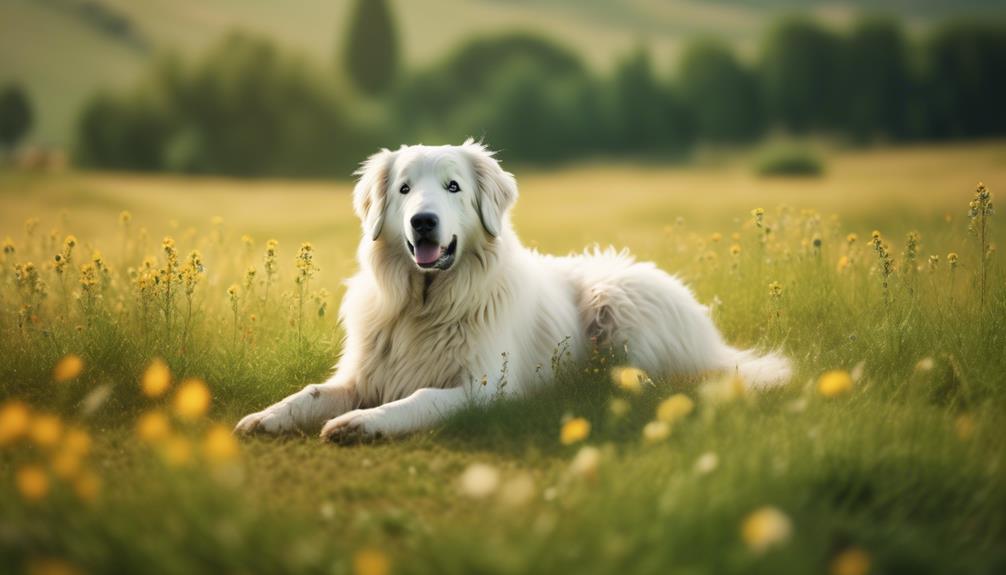
Maremma Sheepdogs have an average lifespan of 10-12 years and require specific health considerations to ensure their well-being. Like many large breeds, they're prone to certain health problems such as hip or elbow dysplasia, eye issues, bloat, and sensitivity to anesthesia and tick/flea sprays. It's important to provide proper training and socialization, as well as avoid over-exertion to prevent injuries.
Regular dental care, nail trims, and ear checks are necessary for their overall health. Maremma Sheepdogs should be fed a diet formulated for large breeds with moderate energy levels to avoid overfeeding. Their white, long, and thick coat requires regular brushing, and they shed heavily twice a year.
Despite their generally good temperament, compatibility with other dogs depends on dominance and they may have difficulty with children outside of their own family.
Behavioral Traits and Temperament
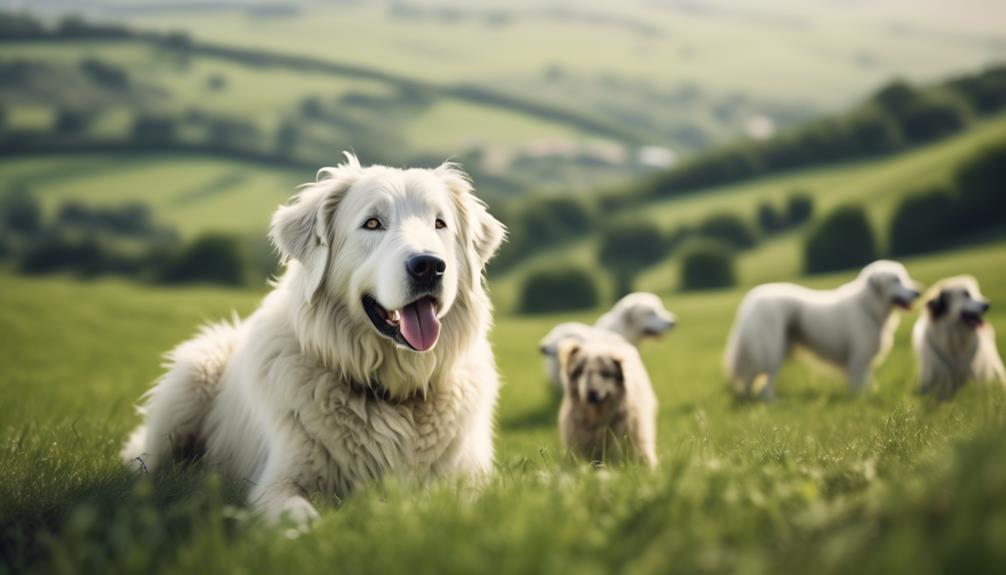
After discussing the lifespan and health considerations of the Maremma Sheepdog, it's important to understand their behavioral traits and temperament.
- Loyalty and Dedication: Maremma Sheepdogs are known for their unwavering loyalty and dedication to their families. They form strong bonds and will go to great lengths to protect those they love.
- Independent Thinkers: Maremmas have an independent streak and can be quite stubborn. They require early training and socialization to ensure they understand their role in the family and can be well-behaved.
- Activity and Space Needs: Maremmas are active dogs that require lots of space to roam and explore. They thrive in a rural environment where they can fulfill their natural instincts as livestock guardian dogs.
- Compatibility with Children and Other Pets: Maremmas generally get along well with children within their own family. However, they may have difficulty with children outside the family. They can also coexist peacefully with other animals, but compatibility with other dogs depends on the individual dog's dominance tendencies.
Adaptability and Suitability for Apartment Living
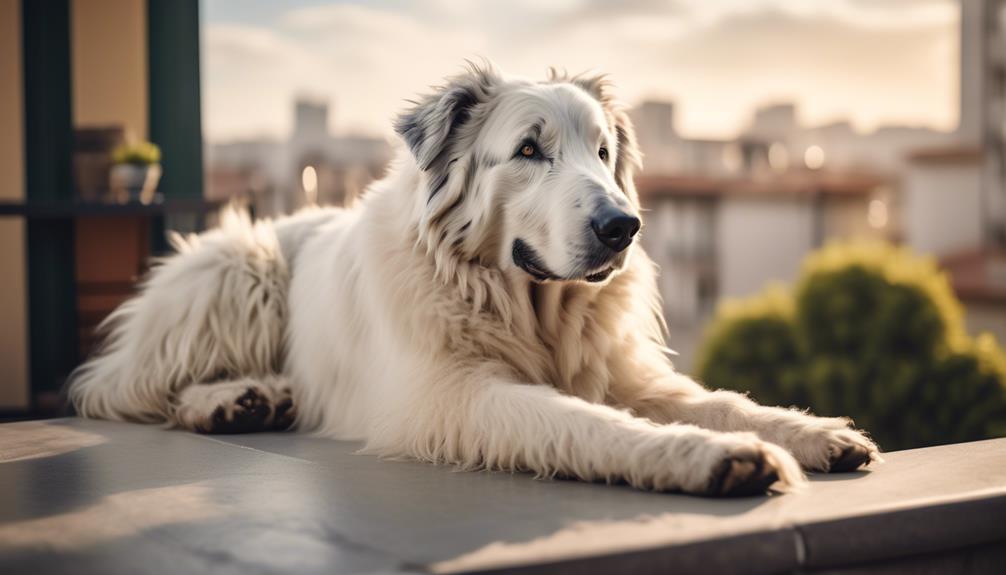
When considering the adaptability and suitability of the Maremma Sheepdog for apartment living, it is important to look beyond their size alone. While the Maremma Sheepdog is a large breed, their adaptability to apartment living can depend on other factors such as energy levels and behavior towards neighbors. It is possible for certain small dog breeds to thrive in apartments with indoor playtime or brisk walks. Prioritizing qualities such as being quiet, low-energy, calm indoors, and exhibiting good manners can help create a harmonious living environment. However, highly sensitive, independent thinking, or assertive dogs may be harder to manage for first-time dog parents in an apartment setting. Consideration of these factors can help determine if the Maremma Sheepdog is a suitable choice for apartment living.
| Factors to Consider | ||
|---|---|---|
| Size | Energy Levels | Behavior Towards Neighbors |
| Creating a Harmonious Living Environment |
Exercise and Play Needs
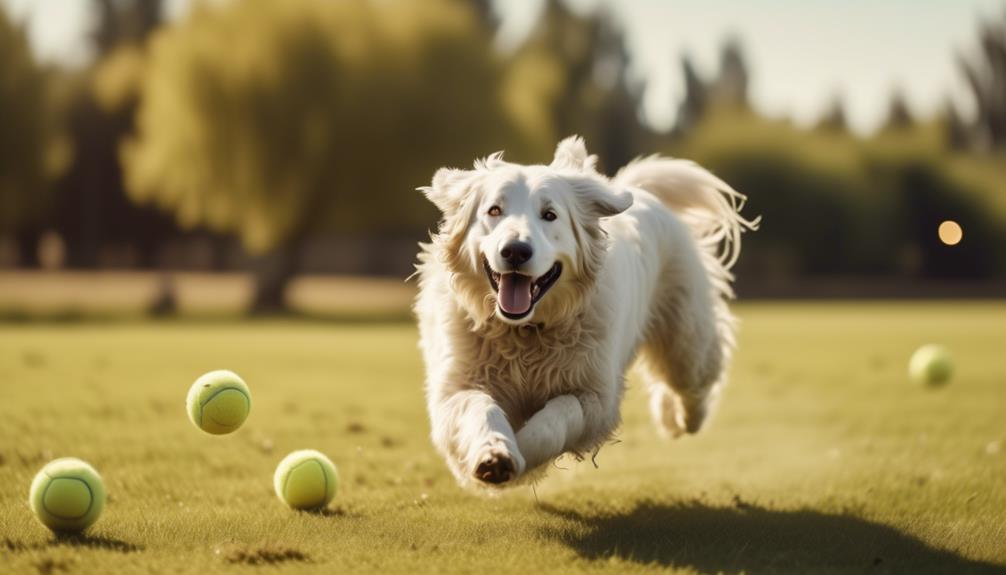
To ensure the overall well-being of the Maremma Sheepdog, it's important to understand their exercise and play needs. Here are four key points to consider:
- Daily exercise: Maremma Sheepdogs are a large and active breed that requires regular physical activity to maintain their health and happiness. They benefit from at least one hour of exercise every day, such as brisk walks, runs, or play sessions in a securely fenced yard.
- Mental stimulation: In addition to physical exercise, Maremma Sheepdogs also need mental stimulation to prevent boredom and destructive behaviors. Providing them with puzzle toys, obedience training, and interactive games can help keep their minds engaged.
- Socialization: It's crucial to expose Maremma Sheepdogs to various environments, people, and other animals from a young age. Proper socialization helps them develop into well-rounded and confident dogs.
- Playtime: Maremma Sheepdogs have a playful nature and enjoy interactive playtime with their owners. Engaging in activities like fetch, hide-and-seek, or tug-of-war not only provides physical exercise but also strengthens the bond between the dog and their owner.
Training and Socialization
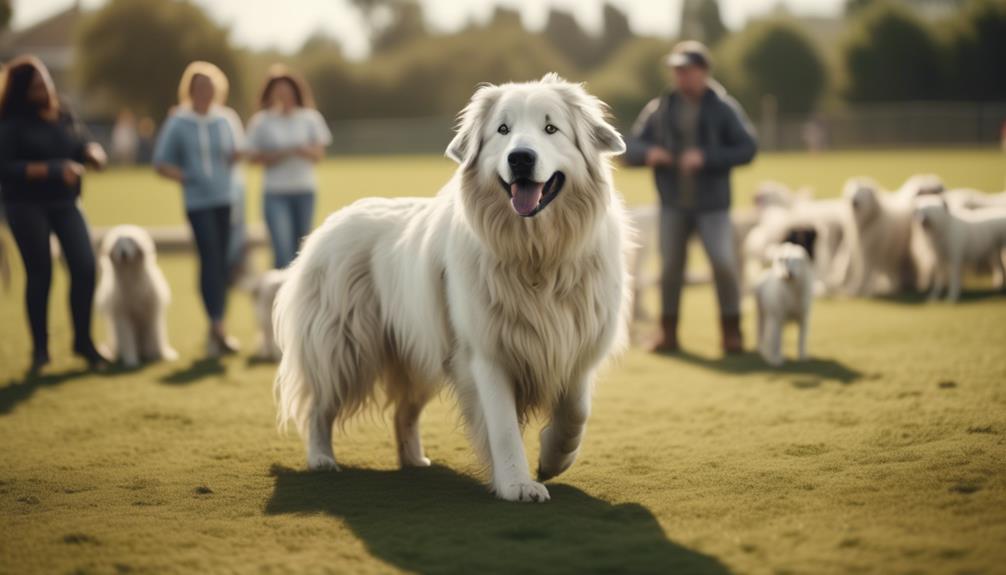
Moving on to the next important aspect of caring for a Maremma Sheepdog, training and socialization play a crucial role in shaping their behavior and overall temperament. These dogs are known for their loyalty and dedication, but they can also be independent thinkers. Early training and socialization are essential to ensure that they grow up to be well-behaved and well-adjusted dogs.
Maremma Sheepdogs should be exposed to different people, animals, and environments from a young age to prevent them from becoming fearful or aggressive towards unfamiliar situations. Positive reinforcement training methods work best with these intelligent and quick learners. Consistency, patience, and plenty of positive reinforcement will help to mold them into obedient and well-mannered companions.
Feeding and Nutritional Requirements
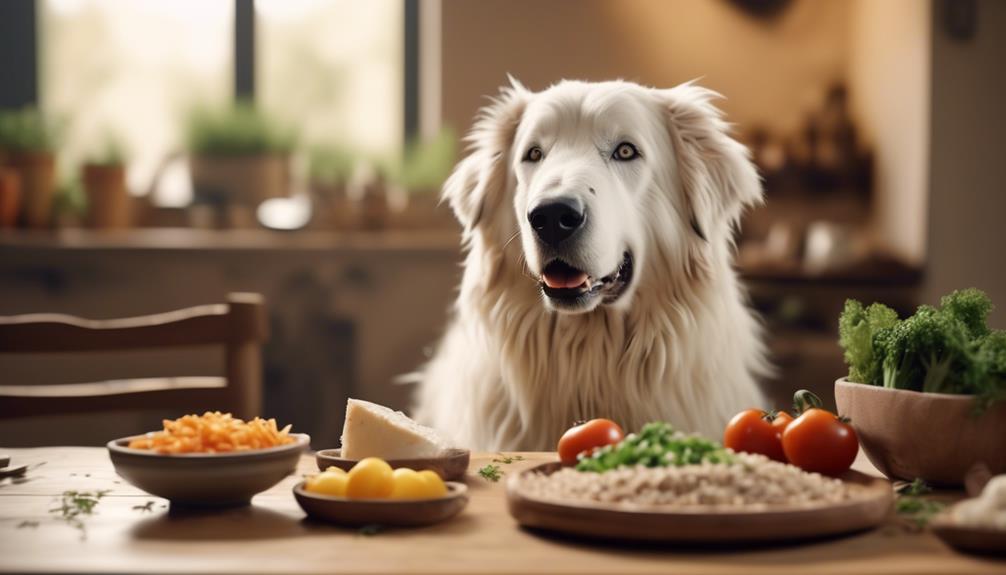
Feeding and nutritional requirements for the Maremma Sheepdog should be carefully considered to ensure their overall health and well-being. Here are some important points to keep in mind:
- Diet: It's crucial to feed the Maremma Sheepdog a diet formulated for large breeds with moderate energy levels. This will provide them with the necessary nutrients and prevent overfeeding.
- Consult a veterinarian: It's always a good idea to consult a veterinarian for specific feeding recommendations based on the individual needs of your Maremma Sheepdog. They can guide you on the appropriate portion sizes and help address any dietary concerns.
- Age and health: The dietary needs of a Maremma Sheepdog can change with age and health conditions. It's important to monitor their weight and adjust their diet accordingly to support their overall health.
- Avoid overfeeding: Maremma Sheepdogs have a tendency to gain weight easily, so it's important to avoid overfeeding them. Stick to a regular feeding schedule and monitor their body condition to ensure they maintain a healthy weight.
Coat Color, Grooming, and Seasonal Shedding
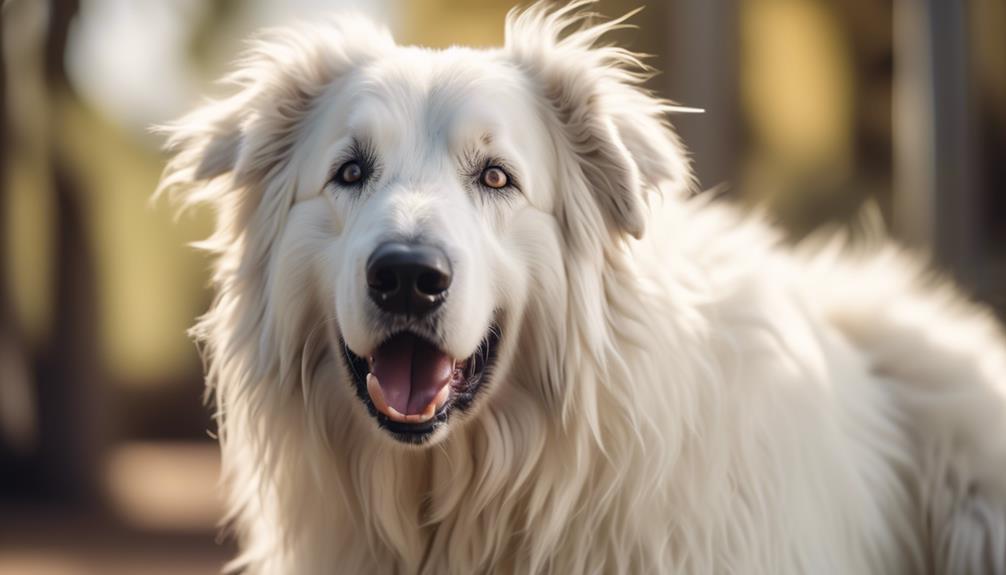
The Maremma Sheepdog's coat color, grooming needs, and seasonal shedding are important aspects to consider when caring for this breed.
The Maremma has a white coat with acceptable variations in shading. Their fur is long, thick, and coarse, with a dense undercoat.
Shedding occurs twice a year, and during this time, they'll shed their undercoat heavily. Regular brushing is necessary to remove loose fur and prevent matting.
While the thick coat provides insulation in winter, it may require shade in the summer to prevent overheating.
Grooming also includes regular dental care, nail trims, and ear checks.
Children and Other Pet Compatibility
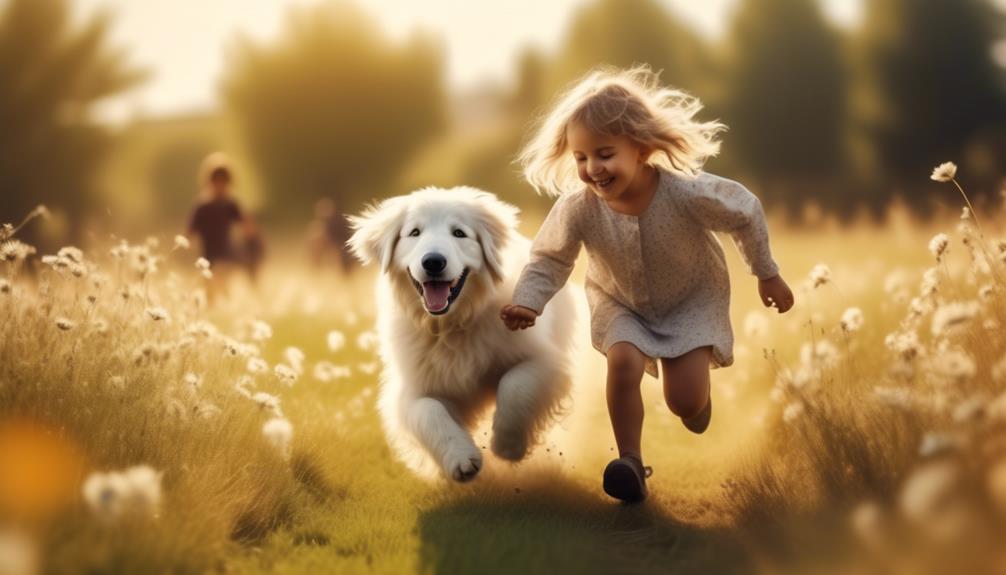
Now shifting our focus to the topic of compatibility with children and other pets, it's important to consider the Maremma Sheepdog's behavior and interactions in these situations.
- Good with children within their own family: Maremma Sheepdogs are generally good with children in their own family. They're loyal and dedicated, making them protective towards their loved ones.
- Difficulty with children outside the family: Maremma Sheepdogs may have difficulty with children outside the family. They can be wary of strangers and may not be as tolerant or accepting of unfamiliar children.
- Can get along well with other animals: Maremma Sheepdogs can get along well with other animals. They've a natural instinct to protect and guard, which can extend to other pets in the household.
- Compatibility with other dogs depends on dominance: The compatibility of Maremma Sheepdogs with other dogs depends on dominance. They're independent thinkers and may assert their dominance, which can lead to conflicts with other dominant dogs. Proper socialization and training are crucial to ensure positive interactions with other dogs.
Frequently Asked Questions
Are Maremma Sheepdogs Good With Cats?
Maremma Sheepdogs can get along well with cats if properly socialized from a young age. Their gentle and protective nature makes them capable of forming positive relationships with other animals, including cats.
How Much Exercise Do Maremma Sheepdogs Need?
Maremma Sheepdogs need a substantial amount of exercise to stay happy and healthy. They benefit from daily physical activity such as long walks, runs, or play sessions. Mental stimulation through training and interactive games is also important for their well-being.
Do Maremma Sheepdogs Have a Strong Prey Drive?
Yes, Maremma Sheepdogs have a strong prey drive. They were originally bred to protect livestock, so they may have a natural instinct to chase and potentially harm smaller animals. Proper training and socialization can help manage this behavior.
Are Maremma Sheepdogs Good With Children?
Maremma Sheepdogs are generally good with children within their own family, but may have difficulty with children outside the family. It's important to supervise interactions and provide proper socialization to ensure a harmonious relationship.
Do Maremma Sheepdogs Have Any Specific Dietary Requirements?
Maremma Sheepdogs have specific dietary requirements. It is important to feed them a diet formulated for large breeds with moderate energy. Avoid overfeeding and consult a veterinarian for specific recommendations as their dietary needs change with age and health.
What are the differences between a Maremma Sheepdog and an Old English Sheepdog?
The main differences between a Maremma Sheepdog and an Old English Sheepdog lie in their physical appearance and origins. The Maremma Sheepdog is an ancient Italian breed known for its protective nature, while the Old English Sheepdog is a large, shaggy dog with a playful temperament. For more old English Sheepdog information and origins, consult a reputable source.
Conclusion
In conclusion, the Maremma Sheepdog is a remarkable breed known for its ancient heritage, majestic appearance, and gentle nature.
With their impressive size and intelligence, they make excellent companions for shepherds and families alike.
While they may require daily exercise and mental stimulation, their adaptability to apartment living can be managed with proper training and socialization.
With their regal appearance and affectionate personality, the Maremma Sheepdog is truly a remarkable breed worth considering for those seeking a loyal and loving companion.




